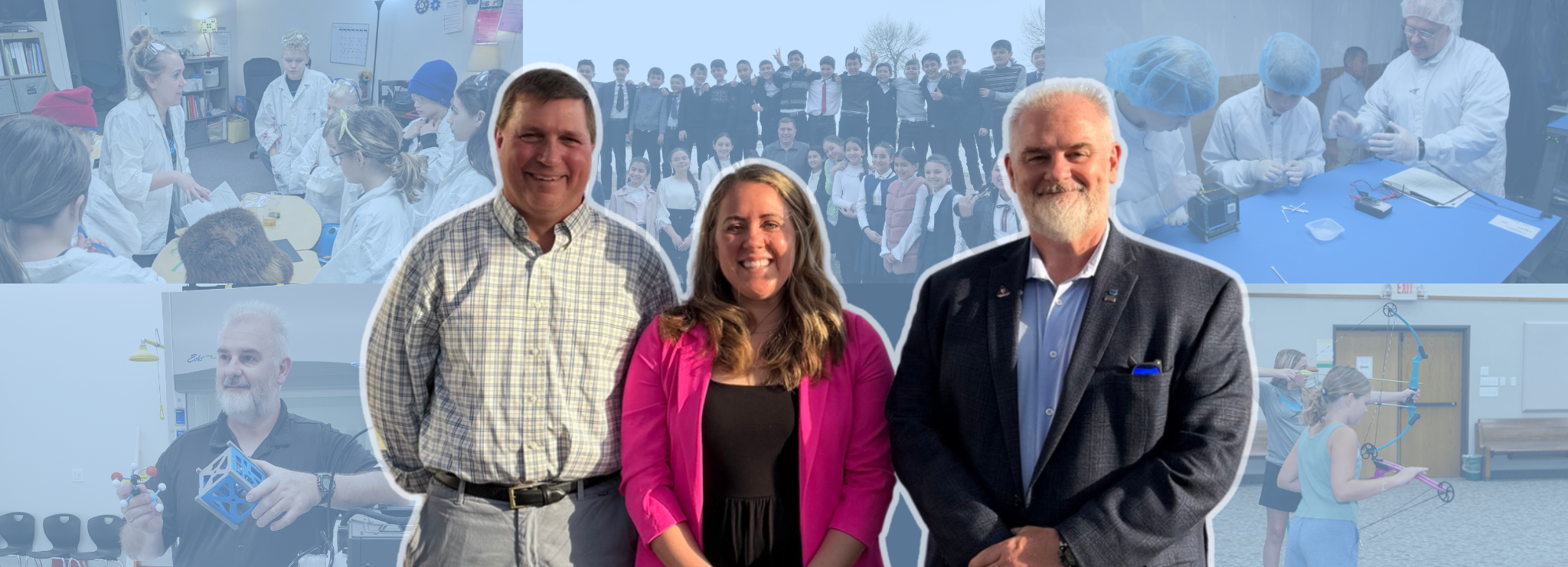
Behind every astronaut, engineer, or coder is a teacher who first showed them what was possible. Since 2022, Challenger Center and AIAA have collaborated to honor educators who go above and beyond to inspire the next generation of explorers and innovators in STEM through our yearly Trailblazing STEM Educator Award.
Last month, we gathered this year’s awardees at a reception at Challenger Center Headquarters in Washington, D.C., kicking off a week’s worth of celebration and activities. Amidst the mingling, wine, and cocktail shrimp, we had a chance to pull our awardees aside and talk to them about what it takes to spark curiosity and create lasting impact in the classroom and beyond.
Touching the Future While Honoring the Past
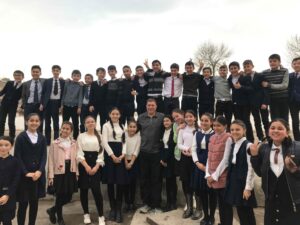 Allan Miller, an educator with 40 years of experience, joined us fresh off a trip to Nha Trang, Vietnam, where he trained school faculty and students on building problem-solving skills through STEM.
Allan Miller, an educator with 40 years of experience, joined us fresh off a trip to Nha Trang, Vietnam, where he trained school faculty and students on building problem-solving skills through STEM.
Alan’s career has been filled with unique and powerful experiences like this, from helping teacher training programs throughout Uzbekistan develop their new national STEM initiative, to even working as a Flight Director with Challenger Learning Center of Alaska! “I was a science teacher on the Kenai Peninsula and had the opportunity to be part of the [Challenger] team,” shared Allen. “Visiting the Center was one of the highlights of every year for my students.”
But Allan’s ties with Challenger Center run deeper. Christa McAuliffe was selected as NASA’s Teacher in Space while Allan was pursuing his degree at Dartmouth. “My professor arranged for us to meet her,” he explained. “Just to be in Christa’s presence was inspirational. My lifelong dream was to be an astronaut, and here was a teacher—the profession I was pursuing—who was about to do it.”
“The unfortunate side of this is that 1986 was my first year teaching,” he told us. “We all watched the launch of STS-51 live, and it ripped our hearts out. Ever since then, part of my mission in life has been continuing Christa’s legacy. I love her quote, ‘I touch the future, I teach.’ I want to do that myself and honor her legacy.”
Allan reflected on the growing cynicism around today’s youth, especially post-pandemic. “My students struggle to believe that there could be a great future ahead of them, and I think that’s where STEM can really be powerful,” he said. “If we can show them the incredible things humans are doing right now, maybe they can find inspiration for themselves in that.”
He knows that well of hope and self-confidence has to start early. “I introduce STEM in kindergarten and first grade,” Allan said. “We need to teach kids that they can be problem solvers early on.”
Making STEM Inclusive with Hands-On Learning
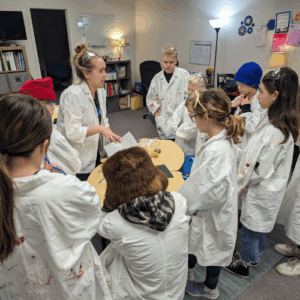 Kelsy Achtenberg came to us from The Innovation School, a microschool in North Dakota. “Receiving this award is a huge deal for us,” she gushed. “Being able to bring a wide variety of STEM programming to our students, and for our small school to be recognized nationally, is such an honor.”
Kelsy Achtenberg came to us from The Innovation School, a microschool in North Dakota. “Receiving this award is a huge deal for us,” she gushed. “Being able to bring a wide variety of STEM programming to our students, and for our small school to be recognized nationally, is such an honor.”
In only 13 years of teaching experience, Kelsy has guided her school to become a Yass Prize quarterfinalist, a VELA grant recipient, and a Canopy Project school. She has been recognized with many awards, particularly for her ability to craft innovative, hands-on, project-based lessons. However, we were particularly inspired by her commitment to inclusivity in STEM, particularly with students with dyslexia.
“Every student learns differently, so giving students individualized instruction is very important to me,” she explained. Many intelligent students with dyslexia are often written off because they struggle with traditional school structure. But because of the experimental nature of STEM fields, Kelsy has found that they often thrive in those subjects if given the proper support.
“Most kids with dyslexia are hands-on learners,” Kelsy said. “Providing them with activities where they can tinker and take things apart and use a makerspace is the best way I’ve been able to support them.” She understands that STEM fields lend themselves to this kind of learning, where experiments are encouraged and students learn not to fear failure, but see it as a part of the learning process. “That’s why it’s so important that STEM is taught in school,” she says. “And that it’s accessible for everyone.”
Building Skills Beyond the Classroom
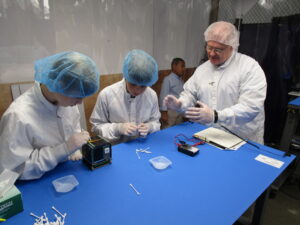 Kevin L. Simmons might live in Palm Beach Gardens, Florida, but his heart—and much of his work—focuses on the nearby Space Coast, home to Kennedy Space Center and Cape Canaveral.
Kevin L. Simmons might live in Palm Beach Gardens, Florida, but his heart—and much of his work—focuses on the nearby Space Coast, home to Kennedy Space Center and Cape Canaveral.
In addition to working as a STEM educator for 21 years, Kevin is the founder of the Wolfpack CubeSat Development Team, co-founder of Aerospace and Innovation Academy, and co-founder of the SmallSat Education Conference, held annually at the Kennedy Space Center’s Visitor Complex.
“I had been taking my students to the Small Satellite Conference in Utah for years, but it’s on the other side of the country,” he explained. “So a friend of mine and I decided we would create a conference on the East Coast focused on SmallSats that would serve as a gathering for educators, administrators, and students to learn about CubeSats, ThinSats, and the High Altitude Balloon program.”
Kevin wants all his students to have tangible, authentic experiences. “Everything I do with my students is in the context of the real world, and hands-on,” he said. “I want to help them be more than good students; I want them to be good citizens. To do that, we must ask: How do we help them become great communicators? How do we help them be creative? How do they problem solve? If we can teach these things around any number of aerospace themes, I think that best prepares them for success in the future.”
Equipping Educators to Empower Students
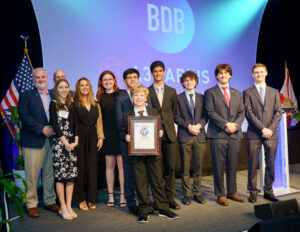 Inspiring the next generation of students is no easy task. As Kevin puts it, “We live in an era of haves and have-nots. It all depends on factors like what kind of educational background a student’s parents may have had, where they live, what kind of school they attend, etc.” Providing kids from disadvantaged backgrounds with opportunities, resources, and mentors is critical in helping them lead successful careers and lives. “Organizations that provide resources educators like me can use, like AIAA and Challenger Center, can really help us change the trajectory of some kids’ lives,” he said.
Inspiring the next generation of students is no easy task. As Kevin puts it, “We live in an era of haves and have-nots. It all depends on factors like what kind of educational background a student’s parents may have had, where they live, what kind of school they attend, etc.” Providing kids from disadvantaged backgrounds with opportunities, resources, and mentors is critical in helping them lead successful careers and lives. “Organizations that provide resources educators like me can use, like AIAA and Challenger Center, can really help us change the trajectory of some kids’ lives,” he said.
These educators remind us that the most powerful force in STEM isn’t fancy technology or cutting-edge labs—it’s a teacher who believes in their students.
